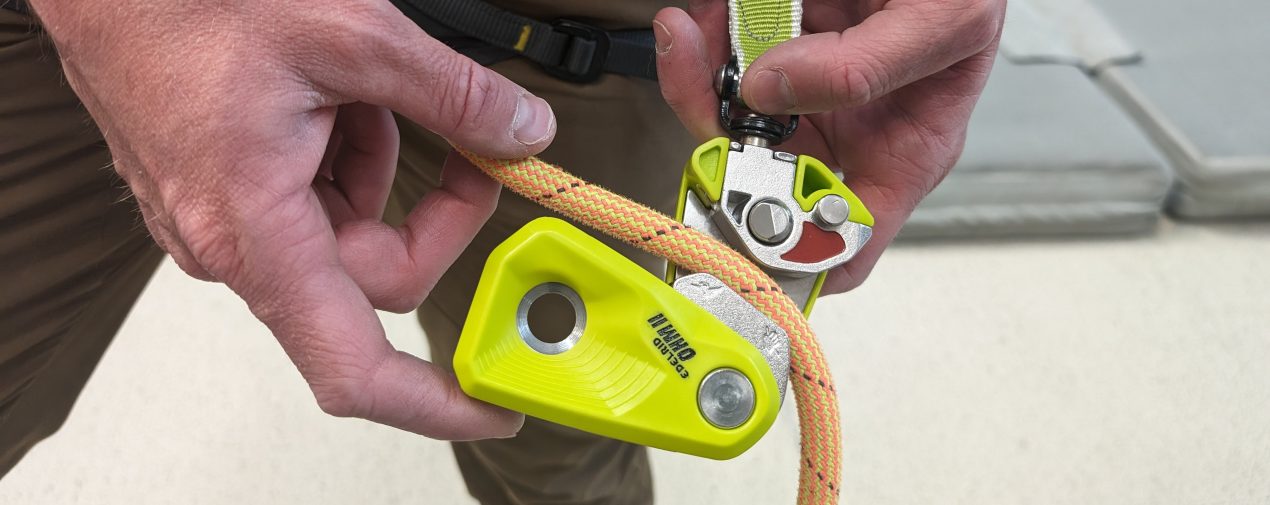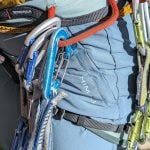ProView – Edelrid Ohm Review
No one I know has ever gotten into climbing because they really enjoy falling. Have you ever been hurled at the wall when your partner falls, or been afraid of decking with a lighter belayer? No thanks! Lead climbing with an Ohm reduces the inherent risks of climbing with a partner who weighs much more or less than you do.
Edelrid Ohm
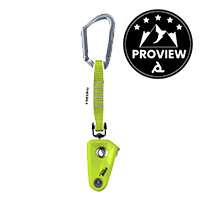
Product Name: Edelrid Ohm
Product Description: The second generation of our innovative and successful OHM is easier to use than ever thanks to a number of updates. The assisted-braking resistor for increasing the braking effect when climbing in rope teams with major weight differences has a swivel joint that improves the device’s freedom of movement. As a result, the clipping direction no longer matters when the device is clipped to the first bolt. The locking system prevents the device from opening accidentally and makes it far easier to insert the rope and remove the device when lowering.
Offer price: MSRP: $149.95
Currency: USD
-
Quality
(5)
-
Durability
(5)
-
Features
(4.5)
-
Eco-Friendly
(5)
Summary
My husband and I have a significant weight difference, which adds risk when climbing. The Ohm allows us to climb together safely. It compensates for the weight difference between us enough that he can take all the falls he wants, and I can catch him safely. The increased friction of the new model will take some getting used to, but overall, we’d recommend this product to any partners with a 60 lb or greater weight difference.
Overall
4.9Pros
- Increased safety for both climber and belayer
- Swivel feature of new Ohm gives more clipping options
Cons
- Adds more friction than older Ohm, which may be more than some partners need
- Difficult to read climber vs belayer icons
- Takes some time to get accustomed to belaying and climbing with the Ohm (not a bad thing!)
My husband Nik and I climb together regularly, both outside and in the gym. Nik and I have been using the first generation Ohm for at least 5 years. We have a significant difference in weight: I weigh 145 lbs (65 kg) and he weighs 225 lbs (102 kg). We love how confident the Ohm made both of us feel about Nik taking lead falls and were excited to test out the new model. We took the new Ohm to our local gym for a few whipper therapy days and to Shelf Road in Cañon City, Colorado for some outside time.
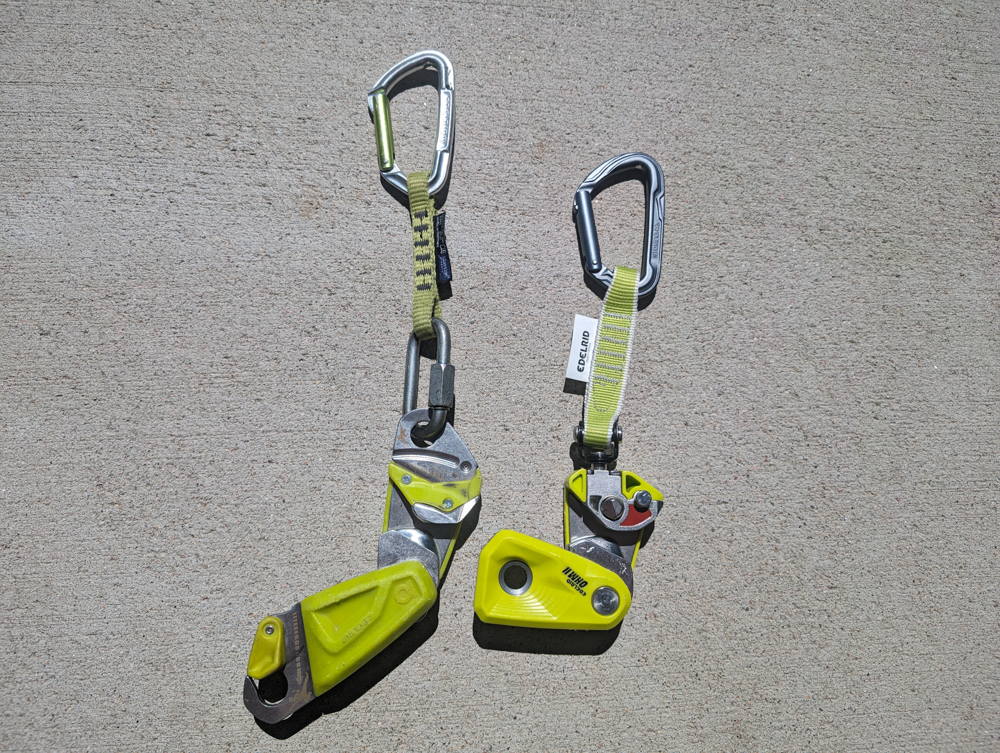
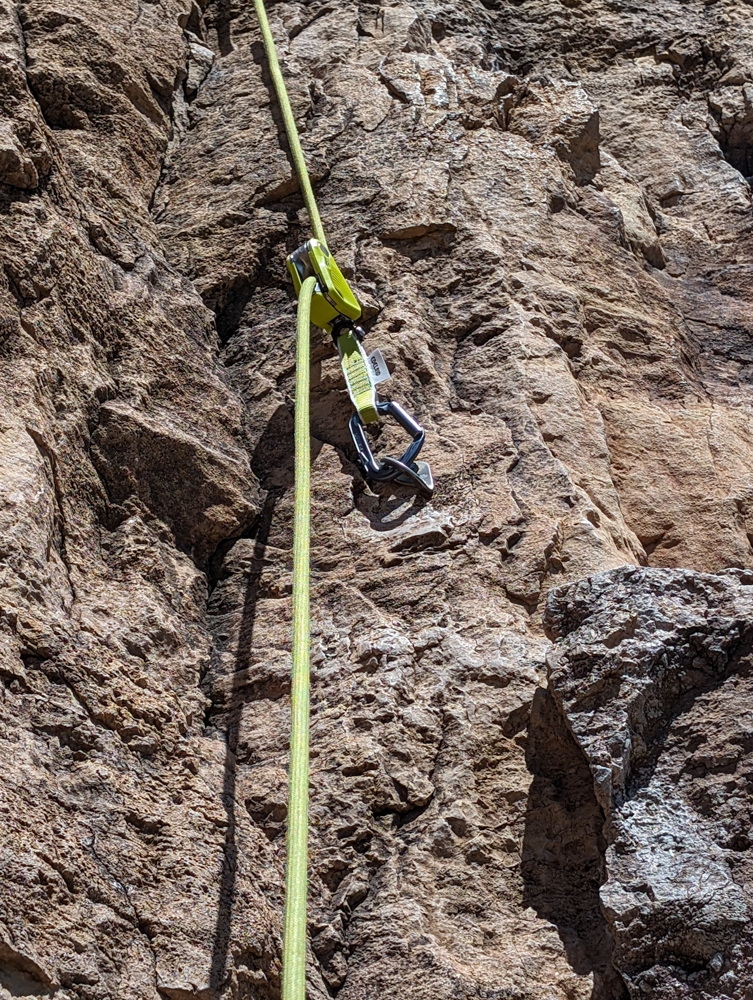
The Ohm is an “assisted braking resistor,” meaning it adds friction to make the belayer “weigh” 55 extra pounds, reducing the effective weight difference between a lighter belayer and heavier climber. The German Alpine Club (n.b.: Edelrid is based in Germany) recommends that if a climber is more than 22 lb (10kg) heavier than the belayer, they should consider adding weight or additional friction. Nik and I have an 80 lb (36 kg) weight difference.
How to Use
The new Ohm does the same job as the old one, it makes it so you don’t sit on your belayer’s head. Just use the Ohm as your first quickdraw and climb like normal. If you do accidentally engage the Ohm while trying to clip, lower your hand, give the rope a little flick, and then try again. Honestly, it’s hard to tell the difference between an accidental engagement and getting shortroped by your belayer. After topping the route, when you are being lowered back to the ground, have your belayer stop you at the Ohm and brace themselves. Disengage the Ohm by pulling down (all of your weight will shift to your belayer when you do this which is why they need to brace themselves) then press the button to remove the rope and clean the Ohm like any other quickdraw.
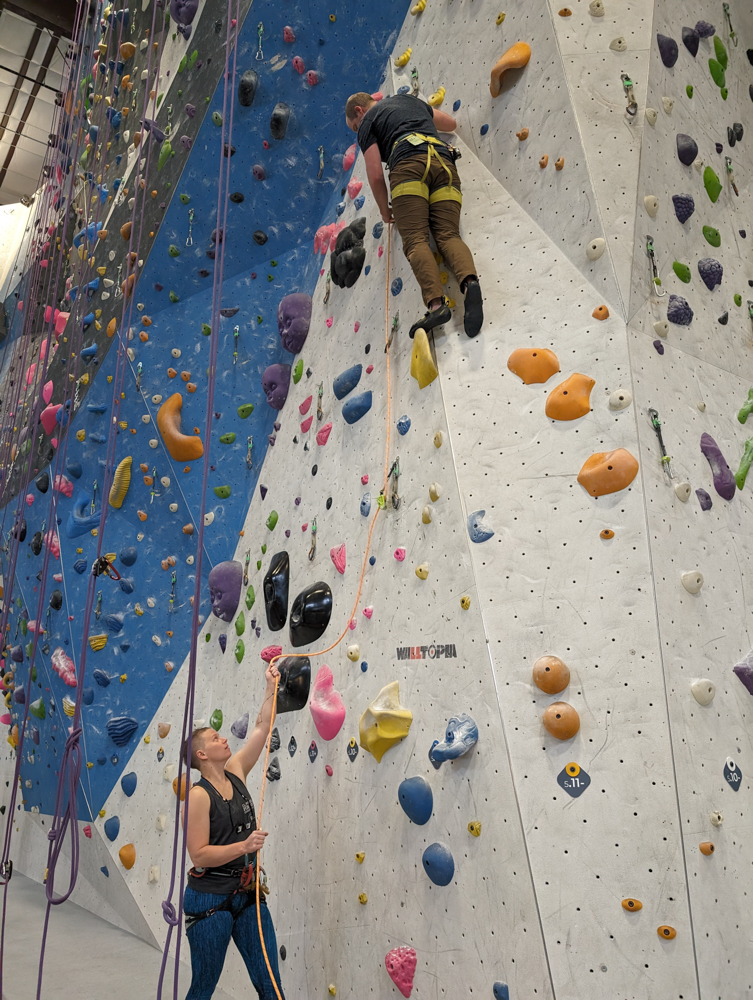
Performance
To be clear, the Ohm is NOT a belay device. It is used to add friction on the rope when clipped at the first bolt, which allows you to lead belay and manage the rope as usual using your belay device of choice. The new Ohm, like its predecessor, compensates for significant weight differences by effectively making you, the belayer, weigh more. In our experience, the new Ohm actually added more weight than the first generation model. To our surprise, I actually had to work to avoid giving a hard catch! Without the Ohm, I always worried about being launched so violently at the first clip that I was injured, or being pulled up so far that my falling climber hit me, or worse, the ground. While I still get pulled towards the wall when catching most falls using the Ohm, it’s far less dramatic than without. It does take practice to belay effectively with the Ohm. Notably, the product guide recommends standing one meter laterally from the wall based on the location of the first bolt, where the Ohm is clipped. If you stand too close to the wall, the Ohm may not properly engage when the leader falls. As an added bonus, the Ohm makes lowering a heavier climber much less awkward.
In most cases, I prefer using an Ohm over alternatives such as weight bags (awkward), anchoring to the wall (can be uncomfortable, not always possible), having my belayer skip the first clip (increases fall risk), or the climber clipping out to the side on a neighboring route (not possible at a busy crag; increases rope drag). The only other mechanical device like this we’re aware of is the ZAED by RAED Climbing but it’s not widely available in the US and is a little more complicated to use.
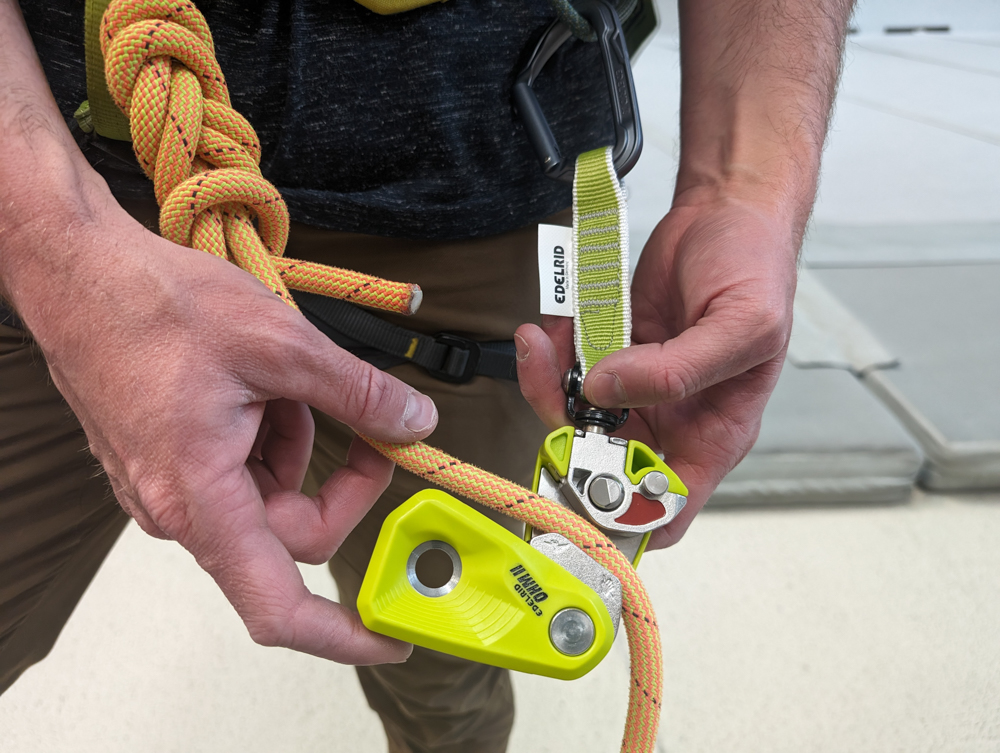
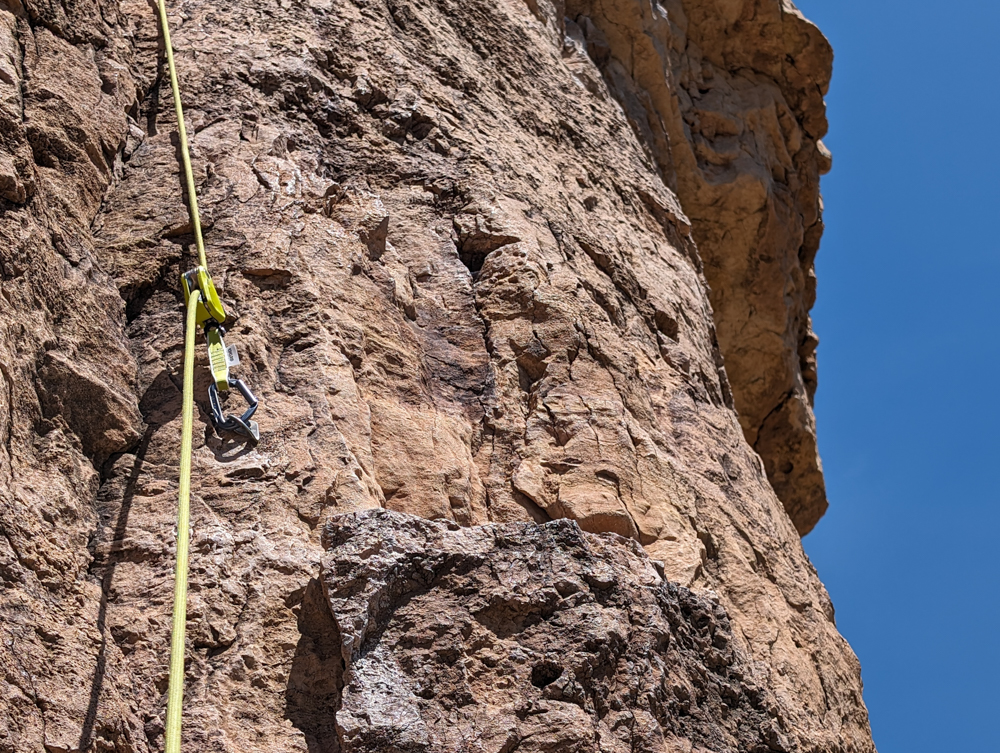
Features, Function, and Durability
The new Ohm is smaller, shorter, and a tiny bit lighter than the first generation model. Clocking in at nearly one pound, it is heavy compared to a quickdraw. The new model is of a similar length as most draws, which seems to reduce the number of times it accidentally engages. The new push button locking system feels more secure with less play than the old system. While we never had a problem with the old system, the new one works well.
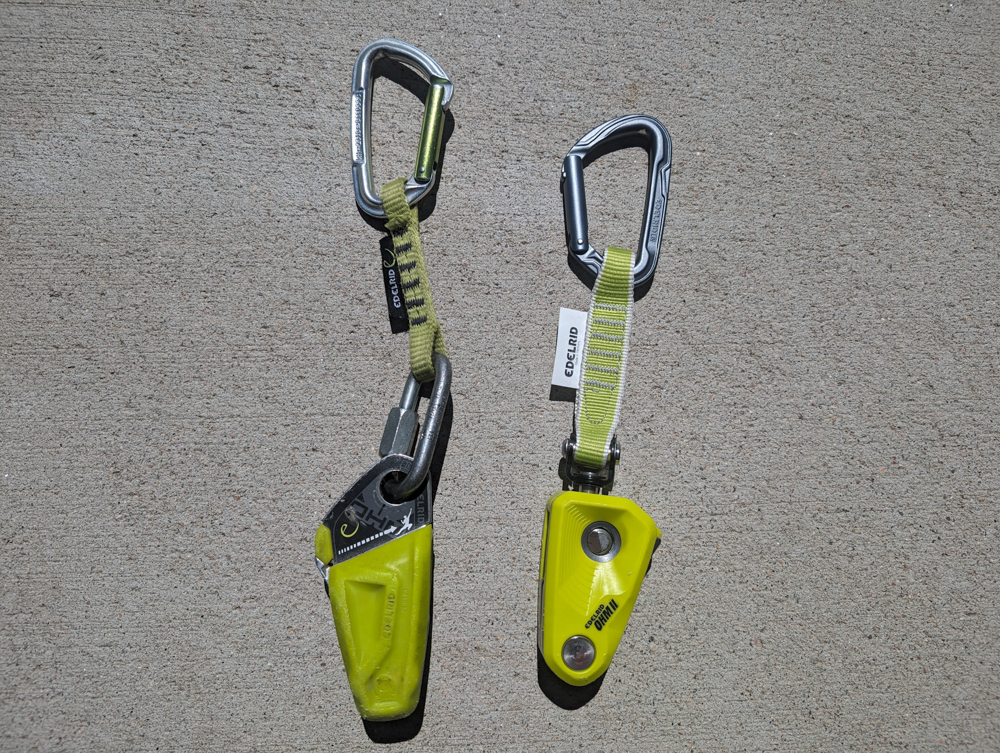
The best change between the new and old Ohm is the swivel. The previous version always had to be clipped into the bolt one way. With the new Ohm, you can clip it to the wall whichever way makes most sense given the direction to the next bolt, and the device will swivel to line up correctly.
As for how hard the catches were, we did our best to do an apples to apples comparison with fresh rope for each fall on a new vs old Ohm and my opinion is that the catches are much harder on the new Ohm. That makes sense because Edelrid went from ~40 pounds of added resistance to ~55 pounds of added resistance. Honestly, it feels a bit more than that. With the old Ohm, Nik wouldn’t mind doing a day of practice falls on every climb at the gym. Nothing I could do would make it feel like a hard catch. With the new Ohm, if I don’t actively try to give a soft catch, Nik reports that it feels hard.
We found that the “climber side” and “belayer side” icons on the new model were smaller and more hidden, making it more difficult to inspect during partner checks.
The Ohm is incredibly durable and well-made. The product guide suggests retiring or re-slinging the textile dogbone every 10 years (requires an allen wrench and loctite for the swivel), but advises that the metal resistor should last forever. You can’t beat that! In addition, Edelrid is an industry leader in sustainability efforts. There is a detailed sustainability report available on their website, which details their innovative practices in manufacturing and durability.
Limitations
The Ohm is not a belay device. It will not catch a climber on its own if they fall. It is more like a fancy quickdraw. The Ohm works best on vertical walls. Highly angled slab may not provide the angle necessary for the Ohm to engage. The Ohm is intended for sport climbing; you cannot use an Ohm with trad gear. We also don’t like using it for multi-pitch sport because it’s difficult to keep it from engaging while pulling up the slack after finishing a pitch and it’s heavy. The Ohm may not sufficiently compensate for larger differences in weight, such as between a child and an adult. Other factors, such as rope diameter, may also affect performance (it’s intended for 8.9 to 11mm ropes).
The Final Word
We are so grateful for the Ohm as it allows us to climb together safely. It compensates for the weight difference between us enough that Nik can take all the falls he wants, and I can catch him safely. The increased friction of the new model will take some getting used to, but overall, we’d recommend this product to any partners with a 60 lb or greater weight difference. Did it save our marriage or anything like that? No, but it certainly did save our “belaytionship”!
Shop the Edelrid on Outdoor Prolink. Not a member? Apply today!
See other Edelrid reviews!
About the Gear Tester
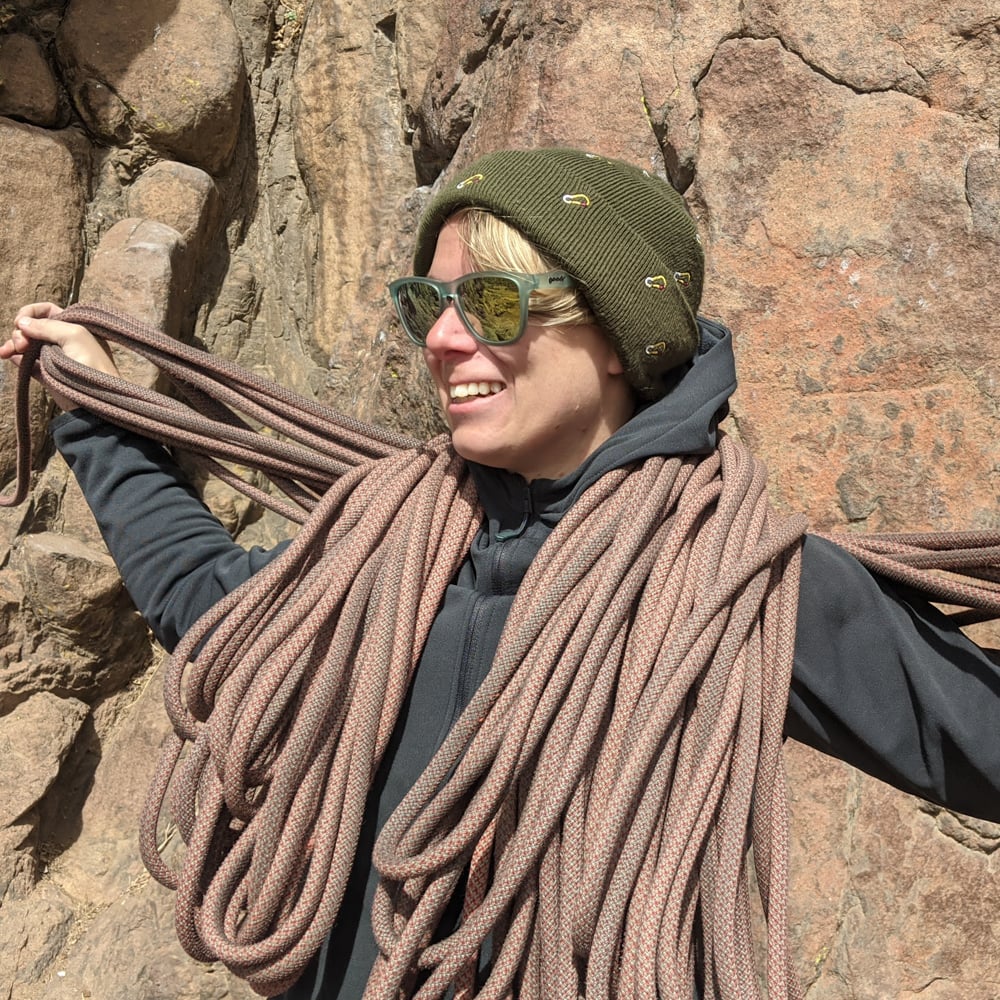
Allison White
Allison is a rock climber who has competed for Team USA in the Paraclimbing World Championships. When the heat of summer precludes climbing, you can probably find her relaxing on a raft or cooking elaborate camp meals. She lives in Colorado and loves to explore with her husband, Nik, and her dog, Cheat.

